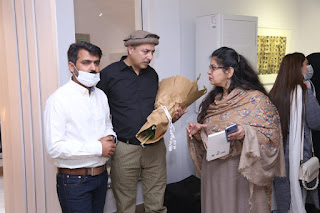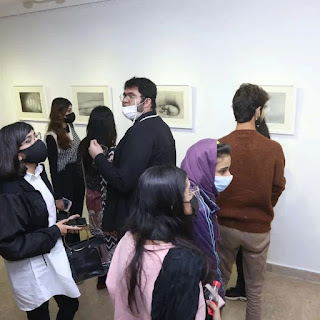Panadol
Panadol – The GlaxoSmithKline is the brand name for 500g of Paracetamol. Panadol is a medicinal drug which belongs to a group of medicines called analgesics (pain relievers) and antipyretics (fever reducers). It works quickly to relieve pain caused by conditions such as headache and osteoarthritis, and to reduce fever caused by infection.
It is used to treat mild to moderate pain from headaches, menstrual periods, toothaches, backaches, osteoarthritis, or cold/flu aches and pains and to reduce fever. So, if I’m sick, I would feel a sense of relief while looking at it and yes, it’d be an inviting sight as it fulfils the basic intermediate need for physical health. But when in good health it would elicit no response from me at all.
As a widely desirable product, Panadol is a medicine every one of use in our day to day lives. Panadol is the most widely available pain reliever in the world, it is marketed in over 80 countries and is the market leader in many.
In Pakistan Panadol was rated the first most trustworthy brand.
It engages the senses of taste, touch and smell, with mild impact on the sense of taste only as it may taste bitter to some. It’s not a poetic/romantic or vanity product but a purely functional one used for medicinal purposes. It also satisfies the fourth basic psychological need; avoidance of pain.
It’s an ordinary looking medicine, similar to a lot of other medicines, elliptical or oval in shape and white or off-whitish in color. Each tablet contains Paracetamol 500 mg. Other ingredients include Maize starch, potassium sorbate (E 202), purified talc, stearic acid, povidone, starch pregelatinised, hypromellose and triacetin.
The ingredients or materials used in the manufacturing of a medicine are thoroughly researched and approved by a number of experts before it is made available to the general public so yes, the choice of ingredients is good. But as any other medicine it does have some side effects too.
Every person in need of the medicine buys their own new, sealed packet of the medicine hence it is not contaminated in the least.
This mild pain reliever has a history that dates back to 1893. This was the first time it got clinical use. It wasn't available for commercial use in the United States until 1950. Australia started using it commercially in 1956. Originally sold under the name Triagesic, this drug was a combination of paracetamol, caffeine, and aspirin.
After the initial introduction in 1950, the manufacturers removed it from commercial use until 1953. The Sterling-Winthrop Company began marketing it under the name Panadol. McNeil Laboratories sold it under the name of Children's Tylenol Elixir in 1955 in the United States. You could only get Paracetamol by prescription until 1959. It then switched to an over-the-counter medication.
In 1956, Frederick Stearns & Co began selling this drug in the United Kingdom in 500-milligram tablets under the name Panadol. From the 1960s to the 1980s, the drug's popularity increased rapidly. It is now considered to be a household drug. Any patents have expired and there are dozens of generic versions of Paracetamol available today.
Panadol is a common non-prescription, centrally-acting pain reliever which was needed for a long time by users. It’s hard to visit hospital regularly during our busy lives for everyday pains we all experience some days or other, hence most people use Panadol as a substitute for the doctor. Most people are safe to take paracetamol. This includes women who are breastfeeding and pregnant. It's a popular drug because it doesn't react to most other medications. It also doesn't cause your blood to thin like NSAIDs. This makes it a popular choice for people on blood thinning medications.
A lot of people simultaneously engage in the use of Panadol in their daily lives. It is a frequently used and common place object available without prescription in many countries to general public, and can be bought from any pharmacy.
The potential market involves all ‘patients suffering from pain and fever’. 4 out of 10 analgesic users purchase Panadol.
The patients, clients, customers, prospective patients, providers, staff, management - everyone - involved in the healthcare organization, facility, or practice.
The main target market are the customers who works in office and outdoor routine workers, because. especially Panadol cold and flu offer cold and pain relief without causing drowsiness.
It saves the time we would normally waste in going to see a doctor for a simple fever or pain. Paracetamol begins to ease pain and lower a high temperature about 30 minutes after a dose is taken. Its effects usually last for about 4 to 6 hours.
I would consider it a successful and good object. Paracetamol, or acetaminophen, is one of the most popular painkillers in the world. Better known by brand names like Tylenol, Panadol or Excedrin. Panadol is used in over 80 countries and regions around the world, use was highest in the 35–39 year age group (32%), declining across older age groups to 19% of those aged 65 years or more. It is designed and available for every class of people.
International Trade Names for Paracetamol:
Tylenol, Tylophen, Anacin Asprin free, Apra, Feverall, Genapap, Panodil, Efferalgan, Doliprane, Dafalgan, Alvedon, Panadol and Valadol
GSK, one of the world's leading healthcare companies, employs 1,700 people across four locations in Ireland. GSK in Dungarvan, Co. Waterford, is the global home of Panadol: around 6.5 billion Panadol tablets are produced here each year and exported to 70 countries worldwide.
Rhodia, which had been the world's second largest producer of the painkiller sold under the Panadol and Tylenol brands, exited the $800m market as a result of increased competition from producers in China and India.
China has become the largest supplier of paracetamol to the drug industry, largely because lower production costs in the country allow manufacturers to sell the active pharmaceutical ingredient (API) at a fraction of price of European versions. Together, China and India-based manufacturers produce about 115,000 tons of paracetamol per year, equivalent to about 70 per cent of the global market.
Majority of paracetamol API are exported from the India and China. France’s National Pharmaceutical Academy estimates the EU imports 80% of its “active pharmaceutical ingredients,” mostly from China and India. The UK medicines regulator estimates that the Chinese manufacturers make around 40% of all APIs used worldwide.
Price in Pakistan - updated May 2022:
Panadol Extra 500MG/65MG Tab 10x10 (L)
Rs. 183.00
Panadol 160G 120ML Syp
Rs. 90.53
Panadol 500MG Tab 20x10 (L)
Rs. 314.00
Panadol Cf 500MG/60MG/4MG Tab 10x10 (L)
Rs. 327.00
Panadol Forte 6-12 Yrs 250MG 90ML Susp
Rs. 70.55
Panadol CF Day Caplet 10x10 (L)
Rs. 307.00
Panadol 60MG 30ML Drops
Rs. 66.26
Panadol Extend 665MG Tab 2x10 (L)
Rs. 105.40
Market worth:
Due to the COVID-19 pandemic, the global Paracetamol market size is estimated to be worth US$ 126.2 million in 2022 and is forecast to a readjusted size of US$ 121.7 million by 2028 with a CAGR of -0.6% during the review period. Fully considering the economic change by this health crisis, Powder accounting for % of the Paracetamol global market in 2021, is projected to value US$ million by 2028, growing at a revised CAGR in the post-COVID-19 period. While Tablet Drug segment is altered to a CAGR throughout this forecast period.
Global Paracetamol key players include Mallinckrodt, Anqiu Lu'an, Granules India, Zhejiang Kangle, etc. Global top four manufacturers hold a share over 55%.
Europe is the largest market, with a share over 30%, followed by China, and USA, both have a share over 50 percent.
In terms of product, Power is the largest segment, with a share over 85%. And in terms of application, the largest application is Tablet Drug, followed by Granule Drug, Oral Solution, etc.
The Paracetamol market is moderately competitive and consists of several major players. Some of the companies which are currently dominating the market are GlaxoSmithKline plc, Teva Pharmaceuticals USA, Inc., Genesis Biotec Inc., Mallinckrodt Pharmaceuticals, Geno Pharma, Biological E, CFL Pharma, Cipla, Dr. Reddy's Labs.
The World Health Organization estimates that at least 10 percent of the drug supply in developing countries consists of counterfeit medicines, causing thousands of deaths every year. Problems have been documented, for instance, in Kenya, Nigeria, India, Vietnam and Panama.
According to the FDA, differences of the authentic paracetamol and the fake one includes the tablet color, foil packaging pattern, foil material, and printed markings. The sale of counterfeit medicines is strictly prohibited under Republic Act No.
Paracetamol, or acetaminophen, is one of the most popular painkillers in the world. Better known by brand names like Tylenol, Panadol or Excedrin, this drug can be used very safely to treat minor aches, pains, and fevers in the short-term.
That said, over the past few decades, unintentional overdoses from paracetamol have been on the rise in many nations, and some scientists think it has to do with the dosages available.
Even when prescribed by physicians, new research from Switzerland suggests a higher dose of paracetamol makes it easier for people to accidentally poison themselves, and while this doesn't often lead to death (we have an effective antidote), it can cause severe liver damage.
Some people should avoid taking this drug. At the very least, it's a good idea to talk to your doctor before you take it. People who want to take include:
- People with liver or kidney problems
- People who have had an allergic reaction to it
- People who drink more than 14 units of alcohol a week
- People who take medicine for Epilepsy or TB
An adult will usually take one 500mg tablet every four to six hours. You should only take 2000 mg in a 24-hour period. You want to wait at least four hours between doses. Also, it can take up to an hour to work.
Children can also take Paracetamol. The correct amount goes by weight. It's usually 15 mg for every kilogram. So, if your child weighs 15 kilograms, the correct dosage would be 225 mg every four hours.
It is a product made to ease human living but overuse or addiction of any product can prove harmful.






















































